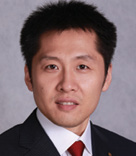Because the technical field to which compound patent cases belong differs from those of commonly seen mechanical and electrical invention/creation cases, such cases have their own particularities in terms of both the write-up requirements and the interpretation of the claims. Furthermore, compound patents often involve such fields as pharmaceuticals, chemical engineering, biology, etc. Their effect on society is large and the economic interests involved huge.

Han Yufeng
润明律师事务所
高级知识产权顾问
Senior IP Consultant
Run Ming Law Office
Writing particularities
Regarding the properties of a compound itself, it can be protected only as an invention patent, unlike mechanical or electrical inventions/creations, which can be protected either as invention patents or utility model patents.
Pursuant to the Patent Examination Guidelines, the claims for a compound are required to use the name of the compound, its structural formula or its molecular formula to describe it.
A compound is to be named using the commonly accepted naming conventions, and use of its trade name or code name is not permitted. The structure of the compound should be clear, and use of ambiguous and vague phrasing is not permitted.
This shows that, starting from the writing, the protection of compounds is clear, and its description will not be vague due to the limitations of language.
The figures for compounds are usually structural formulas indicating their molecular structures, whereas those for mechanical or electrical inventions/creations are schematic diagrams explaining their mechanical structure, circuitry or other such macrostructure.
Determining infringement
As compared to claims in other technical fields, claims for compounds have their distinctive points, and below, while taking into account their particularities, the author would like to discuss the application of certain principles for determining infringement.
Application of the all elements rule. If it is the chemical name of the compound that is recorded in the claims for the patent in question, such chemical name may correspond either to a class of compounds or to only one compound. When it corresponds to a class of compounds, so long as any alleged infringing product is one or more compounds in this class, it should be deemed to fall within the literal scope of the claims for the patent in issue. If it corresponds to one compound and the alleged infringing product is that compound, it should be deemed to fall within the literal scope of the claims for the patent in issue.
If it is the structural formula of the compound that is recorded in the claims for the patent in issue, attention should be on such elements as its various functional groups, molecular configuration, etc. When any small change at the atomic level occurs in the various functional groups, it should be deemed to fall outside the literal scope of the claim in issue, because any change in a functional group will result in the generation of another substance distinguishable from the compound protected by the patent.
Similarly, a change in molecular configuration will also result in a different scope of protection. When a patent claim specifically protects a certain molecular configuration, any molecular configuration other than the molecular configuration in issue should not be included within the literal scope of claim. When the patent claims do not specify which specific molecular configuration a molecule takes, any specific molecular configuration or mixed form that has the structural formula in question should be deemed to fall within the literal scope of protection of the claims for the patent in issue.
If it is the molecular formula of the compound that is recorded in the claims for the patent in question, its various isomers should also be included within the literal scope of the claim. If the molecular formula of the alleged infringing product as compared with the molecular formula defined in the claims for the patent in issue has changes at the atomic level, it should not be included within the literal scope of the claim.
Application of the doctrine of equivalents. The two main reasons for application of the doctrine of equivalents are:
- The certain degree of vagueness in the claims that arises due to the limitations of language itself, requiring the doctrine of equivalents to expand the literal scope of the claims to a certain extent so as to prevent potential infringers from circumventing the scope of protection in bad faith; and
- With the progress of technology, a means not thought of at the time of filing could be used when infringement occurs, constituting an obvious substitution of a technical feature of the claim. For example, one of the technical features of an electronic signal transmission device is a vacuum tube. At the outset, a person skilled in the art could not have imagined the existence of the means that is a diode. However, the diode was subsequently invented, and is a means that is essentially identical, that realises a function that is essentially identical and that achieves a result that is essentially identical to the technical feature that is a vacuum tube in the above-mentioned device, and for a person skilled in the art the substitution of a diode for a vacuum tube is obvious. With a view to effectively protecting the interests of patentee, a diode was determined to be a feature that is equivalent to a vacuum tube and the doctrine of equivalents was applied to expand the protection.
Regarding compounds, the addition or removal of any atom results in a new compound, with the naming thereof standardised by uniform international principles. Accordingly, from the perspective of writing up a patent application, the applicant can readily clearly define all of the compounds it has invented, making it difficult for potential infringers to circumvent the clearly expressed compounds, something that contrasts starkly with the ease with which potential infringers in the mechanical, electrical and other such fields can circumvent the literal scope of the claim.
Additionally, regarding claims for compounds, substitutes for technical features generally do not arise due to technological progress. It is our belief that, in respect of claims for compounds, the doctrine of equivalents should not, in principle, be applied to secure protection.
中国北京市朝阳区建国门外大街甲12号
新华保险大厦1806室
邮编:100022
Suite 1806, NCI Tower
12A Jianguomenwai Avenue
Chaoyang District, Beijing 100022, China
电话 Tel: +8610 65693511
传真 Fax: +8610 65693512/13
www.runminglaw.com
电子信箱 E-mail:
hanyf@runminglaw.com






















